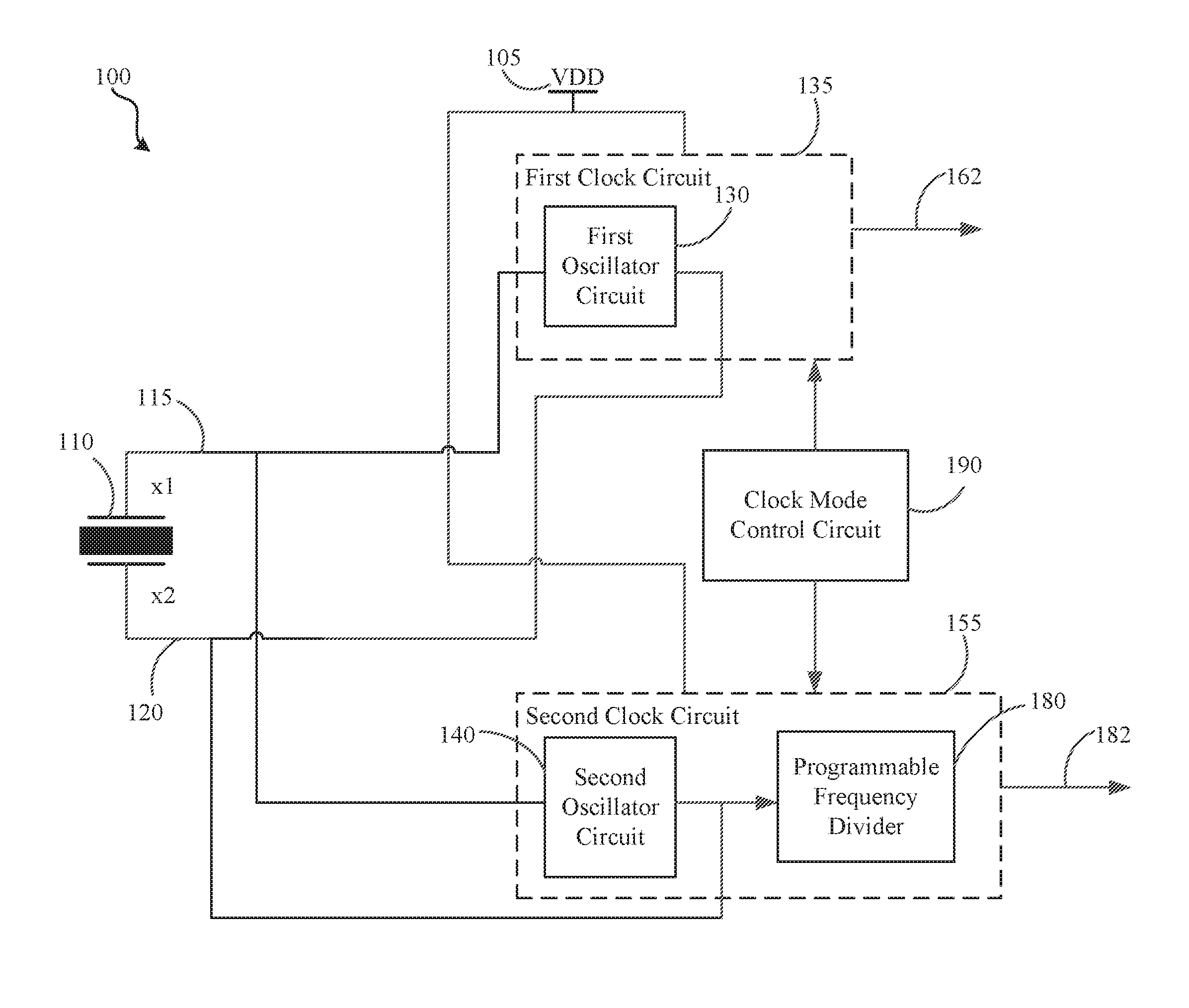Dual mode clock using a common resonator and associated method of use
- Summary
- Abstract
- Description
- Claims
- Application Information
AI Technical Summary
Benefits of technology
Problems solved by technology
Method used
Image
Examples
Embodiment Construction
[0019]Representative embodiments of the present invention are described below with reference to various examples wherein like reference numerals are used throughout the description and several view of the drawings to indicate like or corresponding parts and further wherein the various elements are not necessarily drawn to scale.
[0020]With reference to FIG. 1, an integrated circuit according to an embodiment of the present invention is illustrated and generally designated 100. In this exemplary embodiment 100, the present invention includes a resonator 110 having a resonant frequency that is presented across the outputs x1 115 and x2 120 of the resonator 110. In one embodiment, the resonator 110 may be a piezoelectric resonator, such as a crystal (quartz) resonator. Quartz resonators are well known in the art to provide a stable reference frequency for an integrated circuit. However, this is not meant to be limiting and the resonator may be one of various other resonators known in th...
PUM
 Login to View More
Login to View More Abstract
Description
Claims
Application Information
 Login to View More
Login to View More - R&D
- Intellectual Property
- Life Sciences
- Materials
- Tech Scout
- Unparalleled Data Quality
- Higher Quality Content
- 60% Fewer Hallucinations
Browse by: Latest US Patents, China's latest patents, Technical Efficacy Thesaurus, Application Domain, Technology Topic, Popular Technical Reports.
© 2025 PatSnap. All rights reserved.Legal|Privacy policy|Modern Slavery Act Transparency Statement|Sitemap|About US| Contact US: help@patsnap.com



